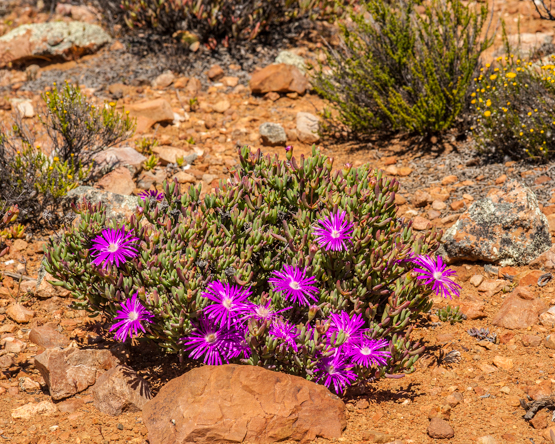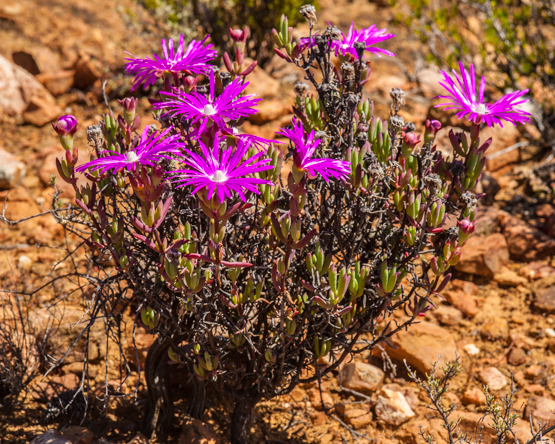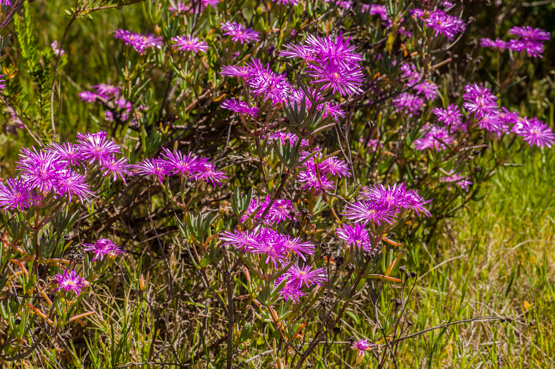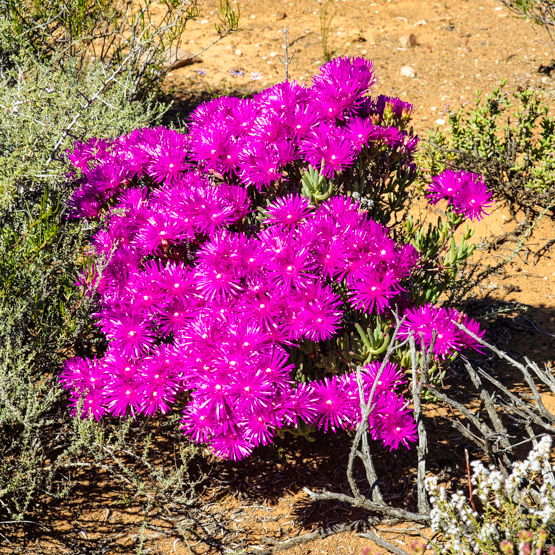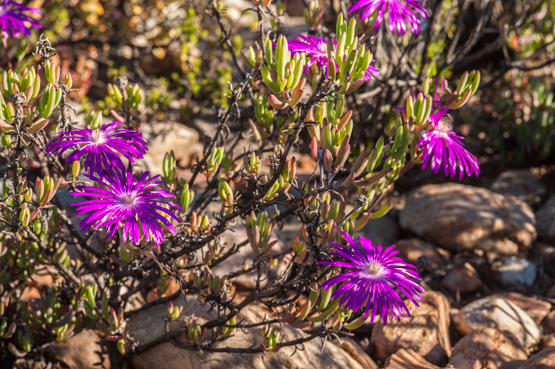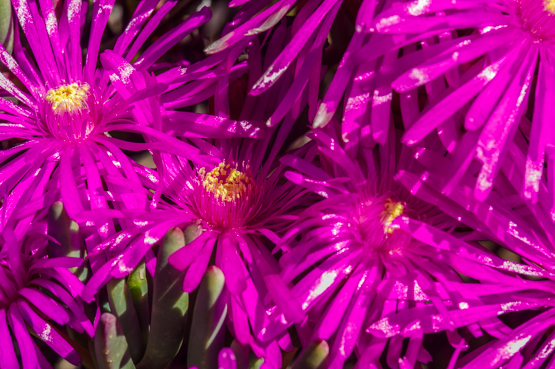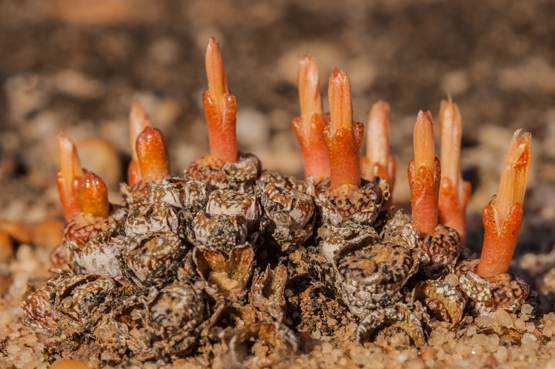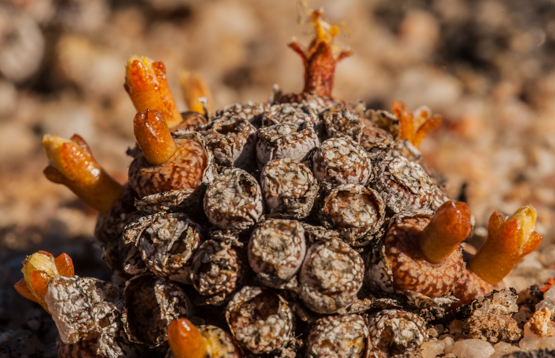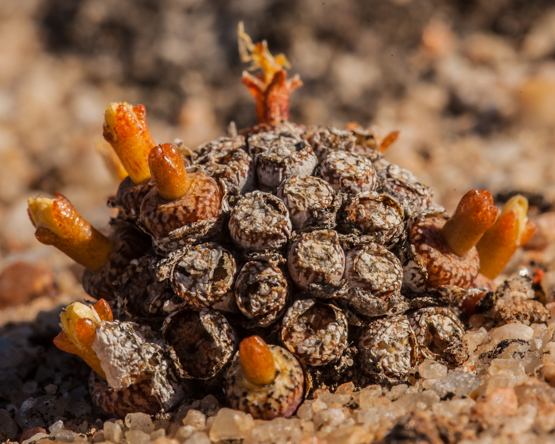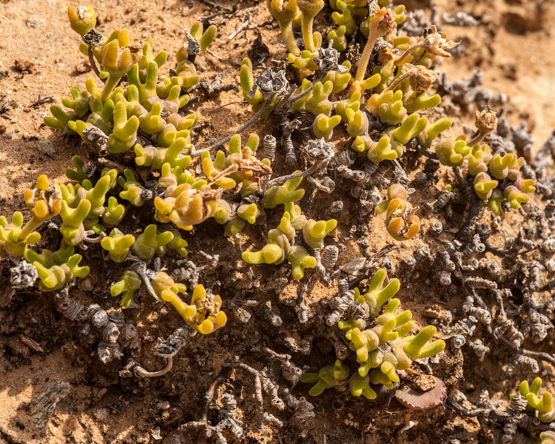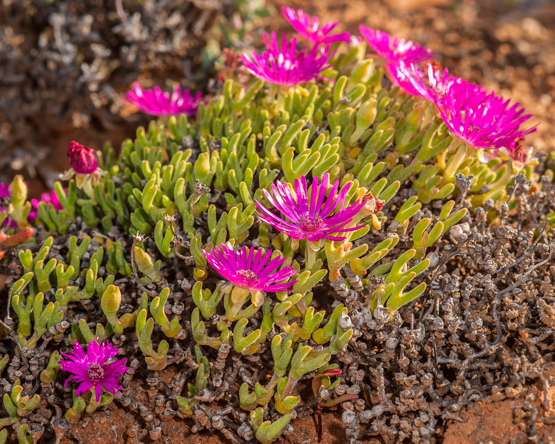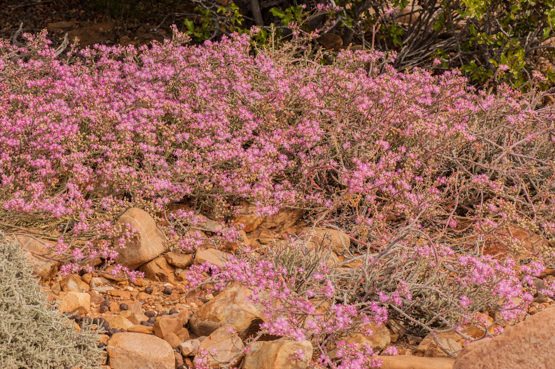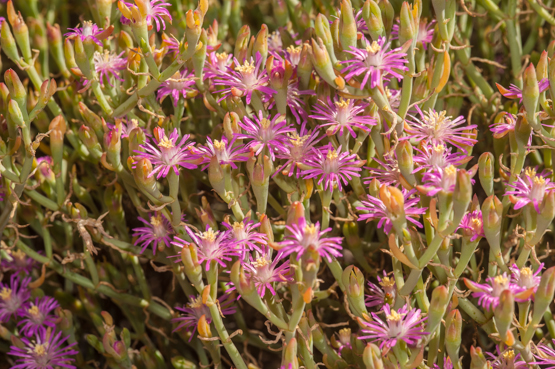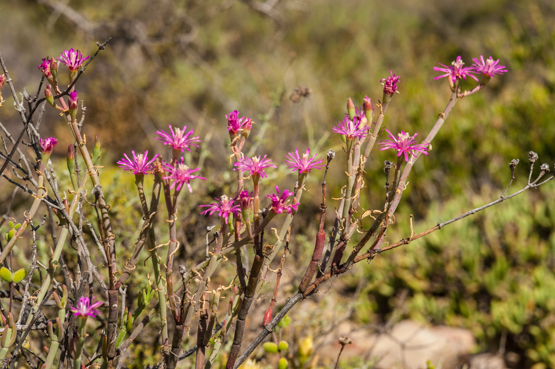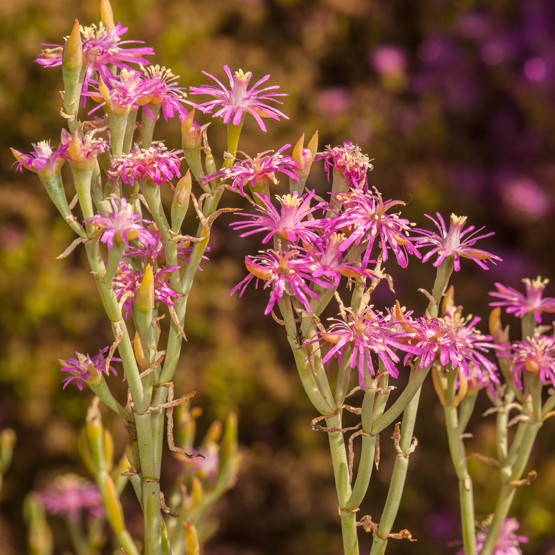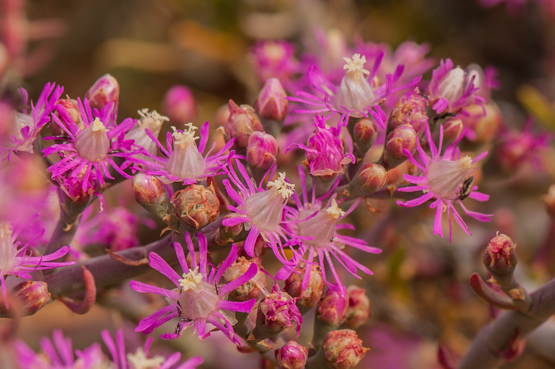Month: November 2014
Lampranthus haworthii (1)
With its large shiny flowers, it is small wonder that this species is often seen in South African gardens.
The plants form robust dense woody shrubs up to 60-70 cm and sometimes even taller. They have light grey-green, more or less cylindrical leaves, 2-4 cm long. The purplish tips of the leaves are quite characteristic.
The flowers are white or pink to light purple with a white base and are up to 8 cm in diameter. They appear in Spring (June – early October).
The species occurs often in considerable numbers throughout the Little Karoo and northwestward to Clanwilliam.
Conophytum comptonii
In an earlier post I discussed Anacampseros comptonii, growing next to this Conophytum. For more information on the habitat please follow the link.
The photos were taken at Oorlogskloof , 4 April 2012.
Meyerophytum meyeri
These peculiar plants produce leaves of two kinds: the first pairs of the season are egg shaped, forming a bilobed body; the second ones are much longer than wide, with the leaves free for about two thirds of their length.
The plants are cushion-shaped and up to about 30 cm in diameter. They are found from the Richtersveld to southern Namaqualand, in loamy soil, often with quartz pebbles.
The flowers appear in winter and are either dark pink throughout, or rose with a white base, or white (turning pink with age).
The first two pictures were taken 6 Sept. 2010 (look at the Crassula elegans and Conophytum saxetanum keeping the first plant company)

The flowering plants were photographed 11 July 2011
Mesembryanthemum (Psilocaulon) junceum
Almost all Mesembs are leaf succulents, but this species is an exception.
On young stems, leaves are present for a short period, but they fall off as soon as the dry period sets in. The leaves are small but at the same time quite succulent. One would think it to be wasteful to invest a lot of energy in producing something that is used for only a short while. Nevertheless it seems to be a successful strategy, as the species is widespread and often locally abundant. They act as pioneers on disturbed loamy soils and that probably explains how they can afford to be wasteful with their resources. The disturbance will in most cases aerate the soil and make nutrients available, so that for some time food is present in abundance.
The plants may be up to 60 cm tall and occur from Namaqualand to the Eastern Cape.
The flowers are white, pink or purple, up to 1.5 cm across and appear in spring (September- November).
